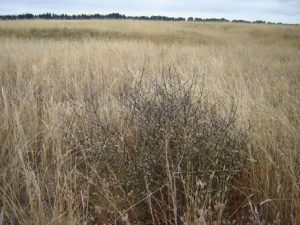The critically endangered dry plains shrub daisy (Olearia adenocarpa) has fewer than 700 adults remaining in the wild, and is not regenerating. Dry plains shrub daisy seedlings establish only when invasive grasses are sprayed with herbicide. This requires intensive and ongoing management, which is only possible over small areas. We are starting a new project to investigate whether habitat restoration could be used as an alternative, less intensive, management technique to herbicide spraying. We will use field trials to test whether competition from invasive grasses can be overcome by restoring native habitat (shrub cover) or natural disturbance regimes (river gravel deposition). The project is being undertaken in collaboration with scientists at Environment Canterbury and University of Canterbury.

Dry plains shrub daisy is confined to the Waimakariri and Rakaia River floodplains in Canterbury and is ranked amongst the 50 most threatened New Zealand plants. It occupies stony, sandy sediments in abandoned river channels prone to drought, and probably colonised these sites after floods deposited fresh sediments. However, flood protection works now prevent both rivers from flooding to their full natural extent. Dry plains shrub daisy originally shared this habitat with other native shrubs, but is now surrounded by grasslands dominated by invasive species. Dry plains shrub daisy is also browsed by rabbits and hares, which are being managed by fencing.